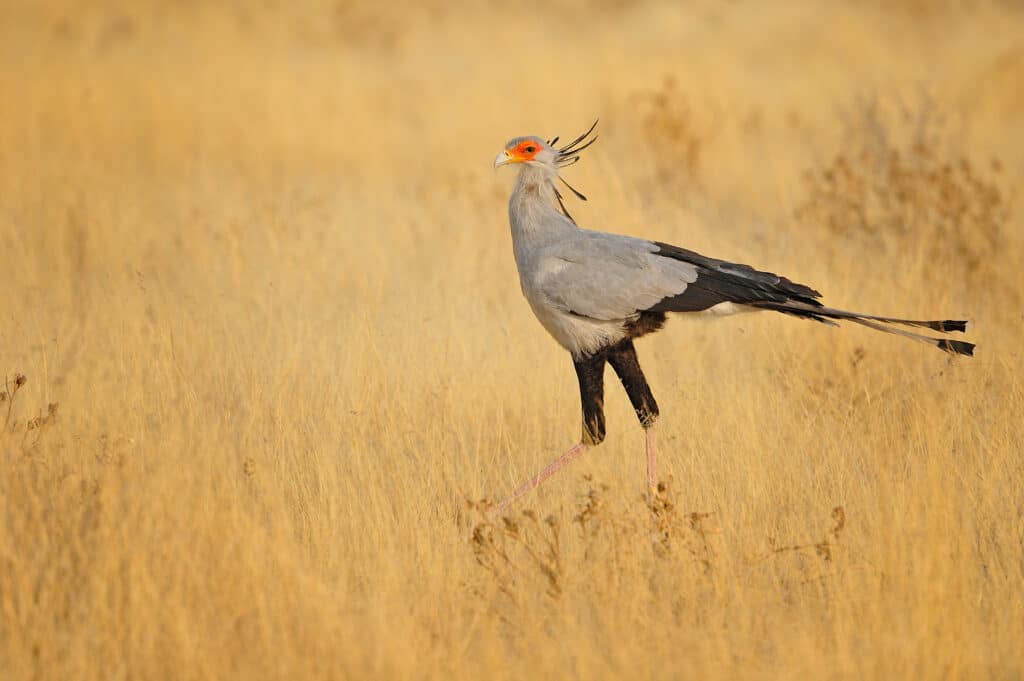First speakers announced for Wildscreen Festival Tanzania
Award-winning Tanzanian Filmmaker, Erica Rugabandana, unveiled as headline speaker; short doc “Chameleon Corridors” set for world premiere.

Award-winning Tanzanian Filmmaker, Erica Rugabandana, unveiled as headline speaker; short doc “Chameleon Corridors” set for world premiere.
WildPhotos is a one-day photography symposium taking place in Bristol, UK, and online on Sunday 13th October.
In the latest in a series of Tanzanian filmmaker case studies, we meet Hans Cosmas Ngoteya, co-founder of Ngoteya Wild.


There are many peculiar and magnificent creatures on our planet, though none are as unusual – or in danger – as EDGE (Evolutionarily Distinct and Globally Endangered) species1. Be it through the stumpy legs of the shy pygmy hippopotamus, the venom glands of the scrappy solenodon, the spiky nose-like rostrum of the largetooth sawfish, or many of the other eccentric EDGE species and their distinctive quirks, these animals are sure to stand out in a crowd!
The term ‘EDGE species’ refers to animals with high ‘EDGE’ scores, which are determined by a scientific framework that combines conservation status with how genetically distinct they are from other species.
While some well-known EDGE species, such as elephants, orangutans, pandas, and rhinoceros receive significant attention world-wide, many others, such as the purple frog and kākāpō are consistently overlooked. Because of their individuality, if they were to go extinct, our planet would lose an incredible reminder of evolutionary history and biodiversity. It would be an utter disaster!
What are EDGE Zones?
EDGE zones were made to focus on areas where multiple EDGE species reside, allowing for more effective conservation strategies due to their high concentration in these specific areas. From the lush rainforests of Brazil to the rocky mountain range of the Western Ghats, these 25 areas in 5 continents, hold one-third of the planet’s species! Talk about a cramped living space.
Were you to look at the distribution in the maps, you would find some incredibly fascinating results! The EDGE mammals map in particular shows that many make their homes in Southern and Eastern Africa, which is in fact the area where many of the world’s earliest mammal lineages evolved. The earliest known mammals, morganucodontids, have certainly come far since their dinosaur-fearing origins.

Who’s Helping?
Everyone, we hope!
It doesn’t matter who you are or where you come from, we believe that anyone can help. From sharing information on EDGE species to getting involved in conservation efforts, there’s many ways you can take action to help these amazing animals. According to the inventors of the Edge of Existence programme, 70% of EDGE mammals receive little to no conservation effort, and that has got to change.
There are many conservationist organisations out there doing their part to try and ensure the EDGE species continue thriving in their natural habitat, such as the Australian Wildlife Conservancy – one of the world’s largest conservation organisations that covers more than 12.9 million hectares of land – and Project SIARC (Sharks Inspiring Action and Research with Communities) – who engage with locals and fishers in Wales to help improve understanding the elusive angelshark and other marine species.
We celebrate these amazing organisations for helping these little-known species, but just about anyone can take significant action to help our wildlife thrive; through offering your time and skills, you can always make a difference.
EDGE of Nature: Short Film Fund
The Edge of Nature: Short Film Fund is our answer to the rapid decline of EDGE species, wherein we want to encourage natural world storytellers to develop novel, unique ways to appeal to younger audiences while highlighting EDGE species and zones, giving them the spotlight they so rightfully deserve.
This could be your chance to bring your project to life! With grants of between £2,000 and £15,000 available, you could receive training, support, and mentorship as well as having your short film showcased at the Wildscreen Festival 2024!
If this excites you and you’d want to read further, everything you need to know can be found here at https://wildscreen.org/industry/edge-of-nature-short-film-fund/. We look forward to seeing what you come up with.
